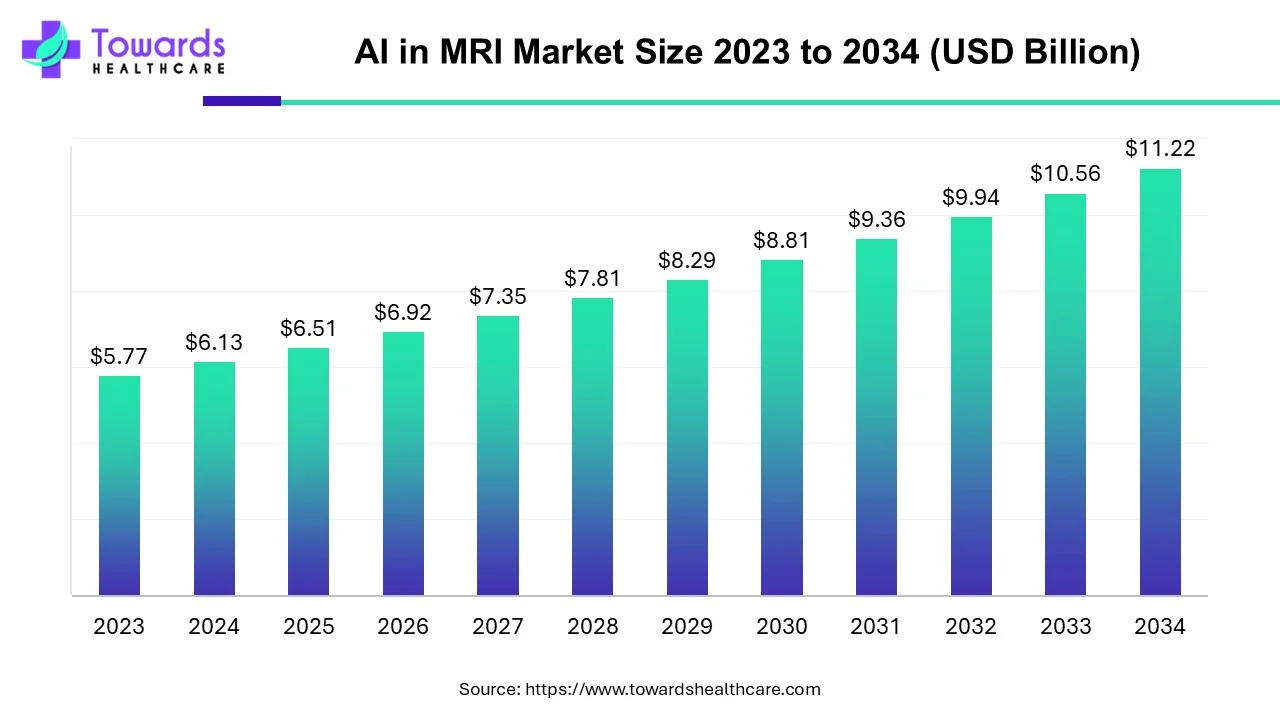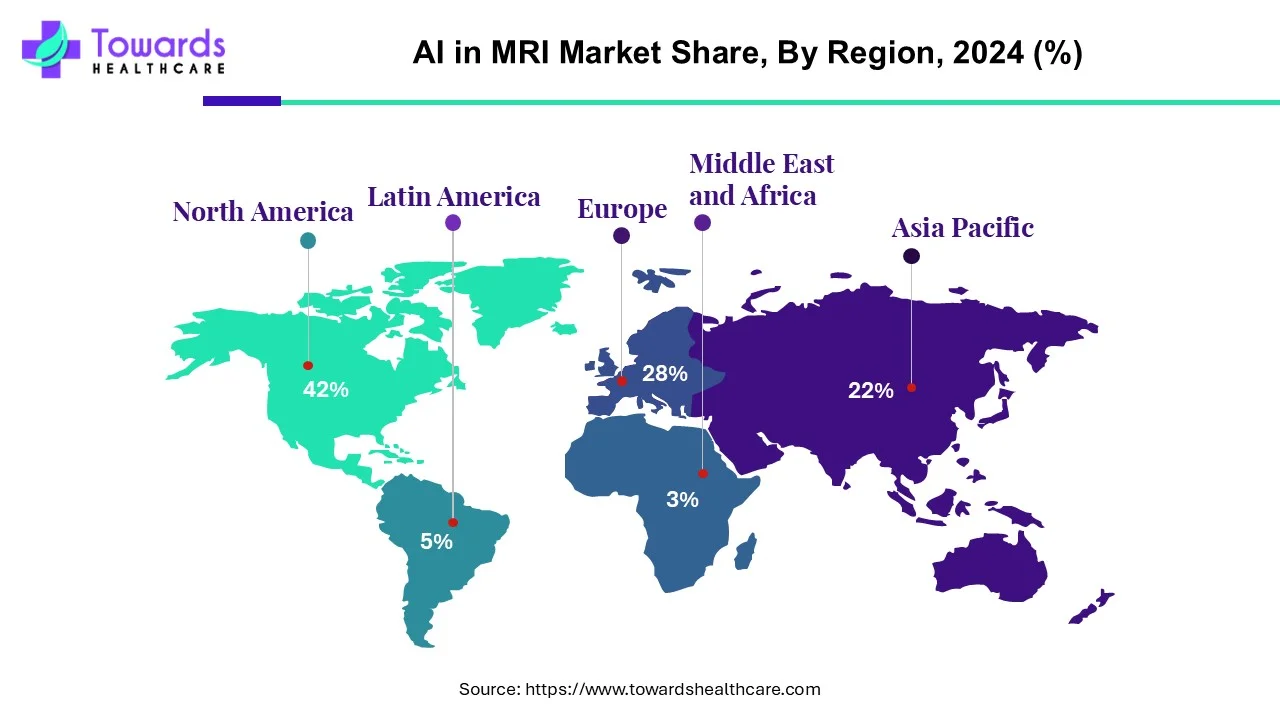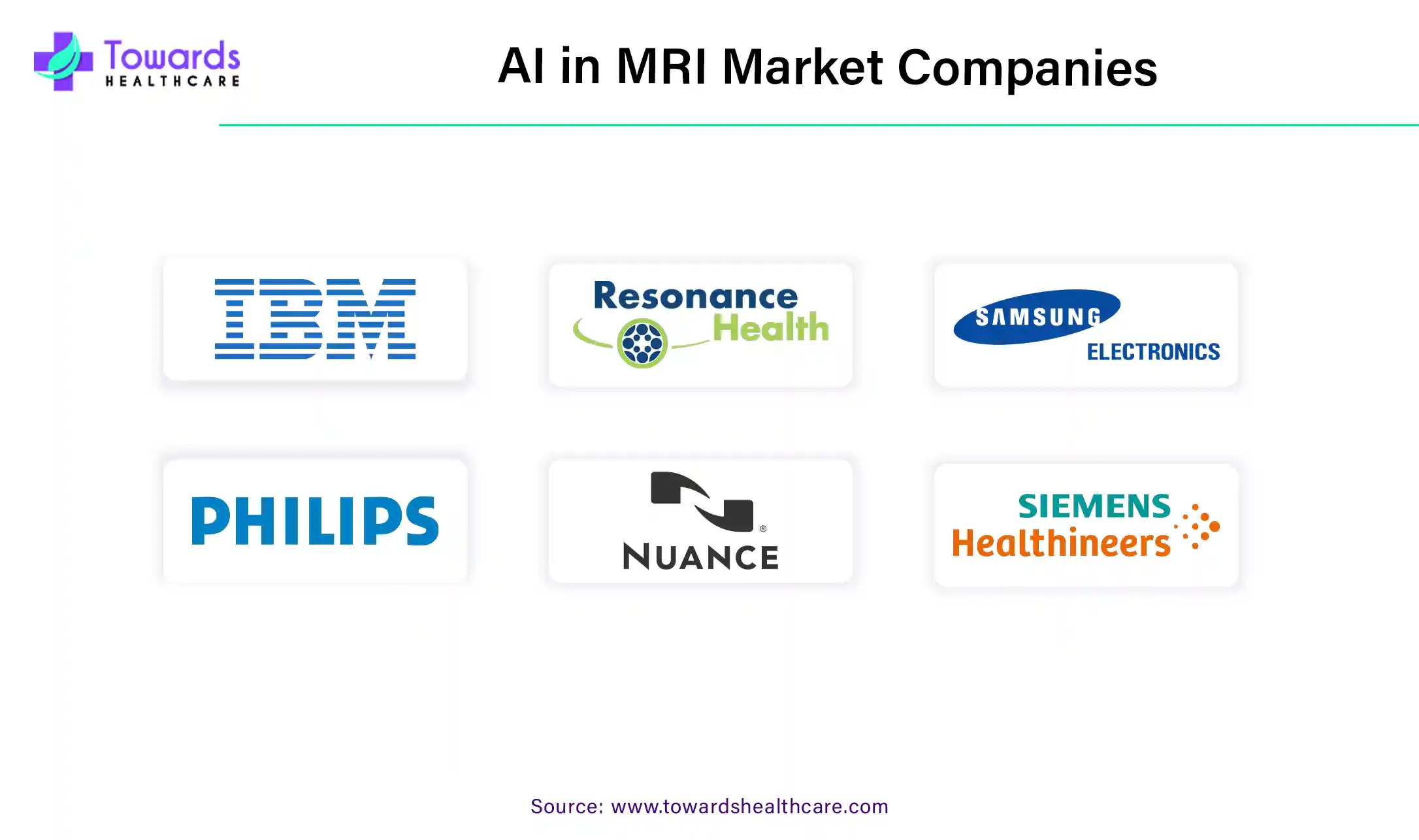March 2025


Principal Consultant

Reviewed By
The global artificial intelligence in magnetic imaging (MRI) market is forecasted to expand from USD 6.13 billion in 2024 to USD 11.22 billion by 2034, growing at a CAGR of 6.23% from 2025 to 2034. Technological advancements, rising prevalence of chronic disorders, and rapidly expanding diagnostics sector are the major growth factors of the market.

Artificial intelligence (AI) is the field of study that creates computerized models to perform tasks that normally require human intelligence. Magnetic Resonance Imaging (MRI) is a non-invasive imaging technique that produces three-dimensional anatomical images. It is widely employed in disease detection, diagnosis, and treatment monitoring. It is based on advanced technology that excites and detects changes in the rotational axis of protons in the water that makes up living tissues.
Artificial intelligence (AI) has transformed the medical imaging landscape by improving diagnostic accuracy and treatment planning for healthcare professionals. The advancement of technology has paved the way for disease diagnosis and medical image evaluation. Machine learning (ML) integration has also improved clinical outcomes and next-generation diagnostic methods. The introduction of new AI software and the use of such tools in routine diagnosis will result in more accurate clinical outcomes. Artificial intelligence (AI) has become a vital feature of many radiology subspecialties, particularly neuroradiology, which relies heavily on magnetic resonance imaging (MRI) to help diagnose conditions affecting the central nervous system.
AI-powered solutions provide accurate volumetric measurements to assist in determining how much healthy brain tissue may be spared from damage, and then automatically fill that data into dictation platforms and other systems. Artificial intelligence (AI) for medical imaging is an efficient strategy. An in-depth grasp of the fundamentals and applications of magnetic resonance imaging (MRI), machine learning (ML), and deep learning (DL) is required for designing AI-based algorithms that can match clinical diagnosis requirements while also being of high quality and efficiency.
As the number of COVID-19 cases increases worldwide, new AI technologies are being developed to assist hospitals in expanding their second-wave treatment. Through remote access to images and reports, the COVID-19 pandemic has increased corporate image processing and telemedicine demand. It also emphasizes the significance of expanding the use of AI and machine learning in diagnostic imaging, with two goals in mind: improving diagnostics and clinician well-being, and job safety. Scientists have made significant contributions to the fight against COVID-19. The number of research results, such as analytical reports and publications, reported by both industrial and academic researchers is growing daily.
AI has demonstrated incredible accuracy and sensitivity in the classification of image anomalies in recent years, improving tissue-based detection and characterization. The incorporation of artificial intelligence (AI) into healthcare and medical imaging has changed the nature of diagnostics and contributed to the growth of global AI in medical imaging market. Artificial intelligence assists doctors in performing imaging procedures and in diagnosing and treating patients individually. Researchers use AI to recognize complex patterns in image data and quantitatively evaluate radiograph characteristics.
Increased chronic infections with an increasing number of disorders among individuals with enhanced diagnostics methods developed in the market with new incorporate into the system with increased output and good performance and high precision increased the market of artificial intelligence in the MRI market with growing demands from the health care sector with faster results and quick treatment for the patient outperforms industry growth to a greater extent.
The shortage of trained professionals who are unable to use these techniques is the factor that limits the growth of the artificial intelligence-based magnetic resonance imaging (MRI) industry. Furthermore, the massive investment required to set up or develop the techniques will thwart future growth. Several market players make large investments in installing new and advanced machines to speed up the process, which raises the cost.
Several major AI players in the medical imaging industry are starting to collaborate or partner with leading AI technology providers to develop AI-based solutions for healthcare applications. With this approach, market participants can provide advanced solutions to consumers while also establishing their position in this volatile market environment. As the demand for AI-based technologies grows, advancements can provide enterprises with a boost in developing advanced products and tools. However, AI technology is expected to have a significant impact in a few areas. These include enhanced diagnostics and unintentional image discoveries, predictive image analysis, workflow efficiency with data analysis, and reporting and prioritization of critical discoveries.
Developing countries are focusing on increasing their AI investments, which will assist companies in integrating AI with medical imaging to increase their revenue share. For instance, China aims to be the global leader in AI by 2030. The strategy entails significant government funding and investments to increase the adoption of AI solutions in industries. Furthermore, rising patient populations in countries such as India, China, and Brazil are expected to provide significant growth opportunities for players in the AI-based MRI industry.
The neurology segment held a dominant presence in the AI in MRI market in 2024. Improve artificial intelligence applications in MRI in the medical industry with growing chronic disorders. Artificial intelligence in MRI is widely used in neurology with the highest industry share due to enhanced therapies for the brain with advances in the treatment and technology with integrated software into the computer with enhanced efficiency for scanning images with easy recognition of the circumstances.
The cardiovascular segment is projected to expand rapidly in the market in the coming years. AI in MRI is widely used in cardiovascular diseases due to increasing heart problems in day to day life with increased lifestyle changes and intake of dietary supplements which affects the health. According to the WHO, cardiovascular diseases are the predominant cause of disability and premature death in the European region, causing over 42.5% of all deaths annually. As a result, the artificial intelligence industry is expected to expand throughout the forecast period.
The on-premise segment held the largest share of the AI in MRI market in 2024. On-premise MRI enable advanced software system in the organization. The rising investment in IT infrastructure and the presence of suitable infrastructure boost the segment’s growth. On-premise system allow professionals to have complete control over the database and application and have immediate access to backup files.
The cloud segment is expected to grow at the fastest rate in the market during the forecast period. Artificial intelligence in MRI based on deployment type and enhanced network technology aids market expansion. Increased integration of clouding systems and easy data transmission with improved connectivity and easy management of work and increased performance in various sectors increased the Internet of Things continually and market expansion to expand. Cloud system eliminates the need for complex infrastructural requirement and enable access to files from anywhere and at any time, potentiating its demand. The rising adoption of internet, ease of use, and demand for scalability also contribute to the segment’s growth.

Based on end-user, Ai in the MRI industry is further segmented into hospitals, clinics, research and laboratories, and others. The hospitals segment led the global market in 2024. Hospitals with a higher market rate and a higher rate of hospitalization for serious disorders aid in imaging and scanning with faster treatment and enhanced advancements and software systems integrated into medical scanning devices and computers. The availability of favorable infrastructure and suitable capital investments propel the segment’s growth.

North America holds the major industry share owing to the increased revenue due to developed technology and advancements in artificial intelligence in MRI with increased performance and good results help the healthcare center with rapid diagnosis and quick treatment involved for patients with rising disorders. The presence of key players and increasing investments contribute to market growth. Government organizations also favor integrating AI in the healthcare sector. The burgeoning medical device sector and favorable regulatory frameworks augment the market. The Food and Drug Administration and Health Canada regulate the approval of advanced and innovative MRI tools in the U.S. and Canada, respectively.
Given the increasing number of government initiatives to promote healthcare providers, Asia-Pacific is predicted to be the fastest-growing region in terms of development in the artificial intelligence-based MRI Industry. The rising incidences of chronic disorders coupled with increasing geriatric population potentiate the market. Many developing countries in Asia-Pacific lack trained professionals to analyze MRI scans, fueling the demand for AI in imaging. The rising adoption of advanced technologies, owing to increasing investments also drive the market.
Josh Gurewitz, Chief Commercial Officer at Subtle Medical, commented on their strategic partnership with 626 that it will enable to expand the reach of SubtleMR and other advanced AI solutions. He added that the partnership will also allow to provide healthcare facilities with cost-effective solutions that improve MRI efficiency and quality, eliminating the need for new, expensive scanner purchases.
Based on end-user, Ai in the MRI industry is further segmented into hospitals, clinics, research and laboratories, and others. With greater advancements in technologies and advances with more features and chronic diseases, industry growth has outpaced market growth with higher demands from the healthcare care sector for developed artificial intelligence in MRI. Hospitals with a higher market rate and a higher rate of hospitalization for serious disorders aid in imaging and scanning with faster treatment and enhanced advancements and software systems integrated into medical scanning devices and computers. This enables the market to expand.

March 2025
March 2025
March 2025
March 2025